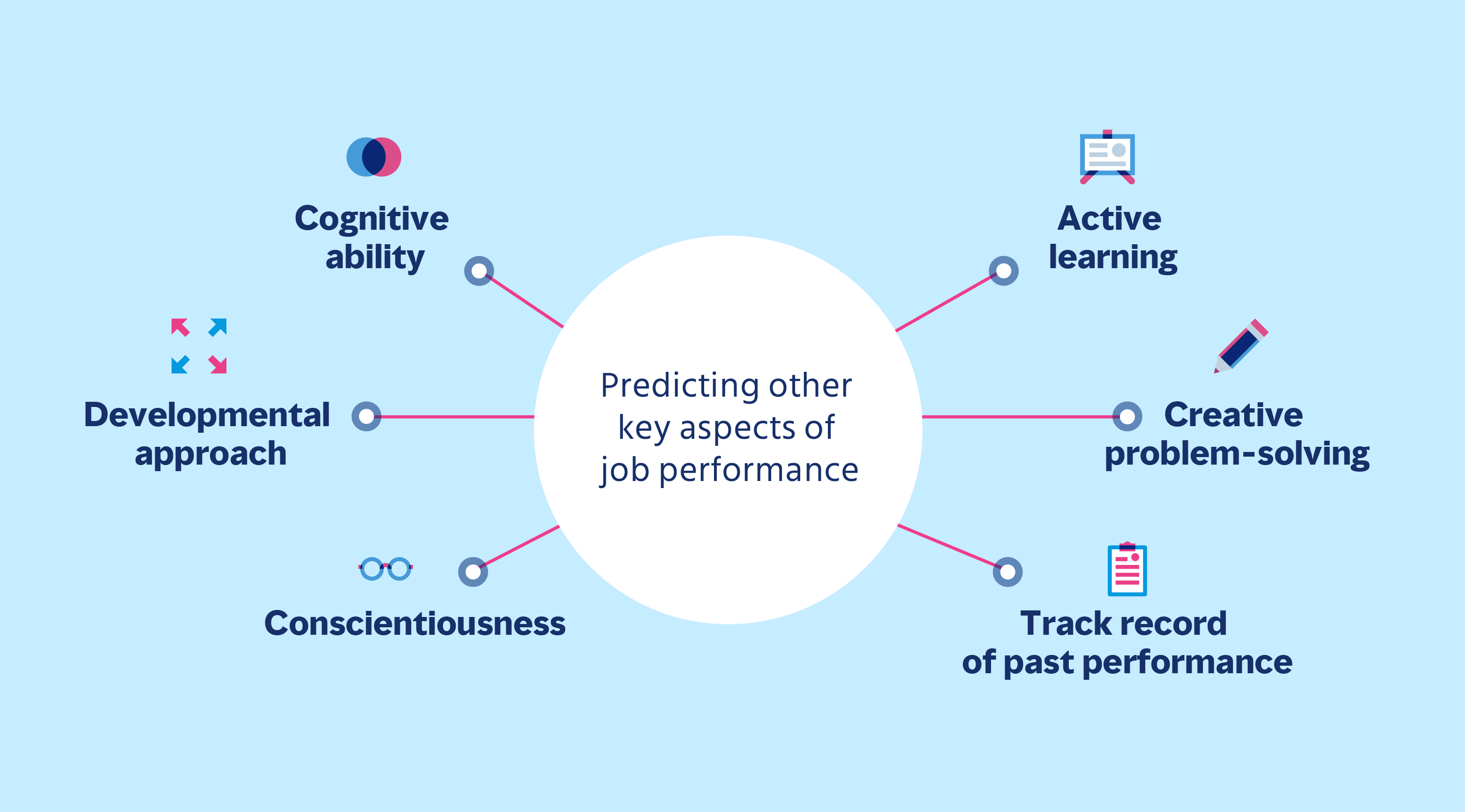A general mental ability (GMA) or aptitude test has high validity, and it is an optimum performance predictor in job-related training.
Candidates with high job performance potential as per the GMA test also benefit more from training programs and acquire job knowledge rapidly. Mercer | Mettl’s General Mental Ability Test measures a candidate’s cognitive ability and identifies their strengths and weaknesses. It determines the level at which they learn, process instructions, and solve problems.
A GMA test is efficient in graduate recruitment, where jobs have significantly high cognitive demands from job seekers. GMA’s ability to predict performance tends to increase as the cognitive demands of jobs increase.
There are many recruitment tools used along with GMA, such as integrity tests. They improve assessment efficiency because these two tests complement each other and offer the widest possible area of evaluation. The combination of GMA and integrity tests overlap less than other combinations, therefore, measuring different competencies and skills.
There are two types of integrity tests. Mercer | Mettl’s Employee Integrity Test is a pre-employment screening evaluation that helps employers understand candidates’ tendency to be responsible, ethical, and trustworthy. It maps candidates’ preferences toward certain behaviors bringing integrity issues to the fore. Mercer | Mettl’s personality assessments measure numerous aspects of one’s personality. These highlight information on the candidate’s thoughts, motivations, traits, opinions, behavioral tendencies, and values.









 Behavioral Competencies
Behavioral Competencies Cognitive Competencies
Cognitive Competencies Coding Competencies
Coding Competencies Domain Competencies
Domain Competencies































Would you like to comment?